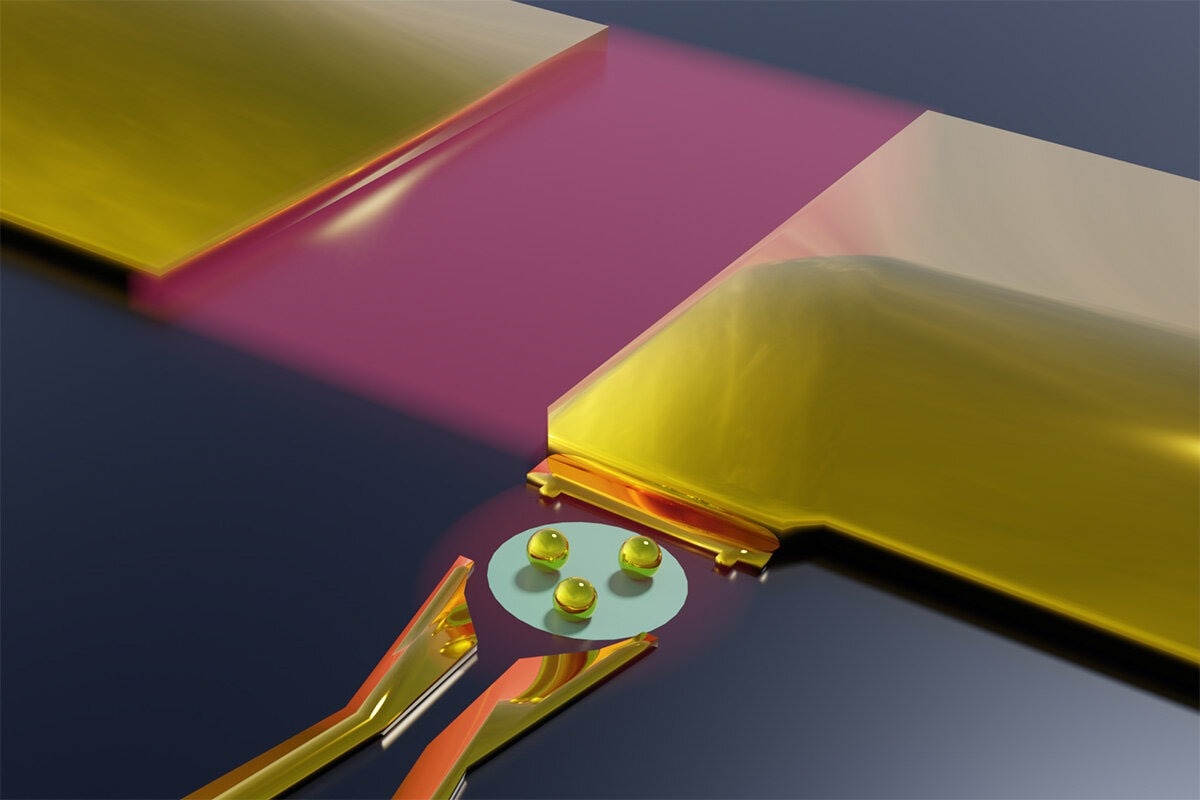The field of quantum electronics is very different from traditional electronics. In the former, memory is stored as qubits, which can be in many different forms, including trapped electrons in nanostructures called quantum dots. In contrast, the latter stores memory as binary digits. Nevertheless, limited qubit design has made it difficult to transmit this information beyond the nearby quantum dot.

Image Credit: The University of Tokyo
Researchers from the Institute of Industrial Science at The University of Tokyo have now found a solution to this issue. They created a new technology that can transmit quantum information over distances of tens to hundreds of micrometers, as reported in a study that was recently published in Physical Review Letters. This development may enhance the performance of future quantum electronics.
On a single quantum computer chip, how can researchers transfer quantum information between quantum dots? Creating light-matter hybrid states is one method of potentially converting electron (matter) information into light (electromagnetic wave) information.
The requirements of quantum information processing for a single electron have not been met by prior work. The study's objective was to enhance high-speed quantum information transmission in a way that is more adaptable in terms of design and works with the semiconductor fabrication equipment that is currently on the market.
In our work, we couple a few electrons in the quantum dot to an electrical circuit known as a terahertz split-ring resonator. The design is simple and suitable for large-scale integration.
Kazuyuki Kuroyama, Study Lead Author, The University of Tokyo
Coupling an ensemble of thousands to tens of thousands of electrons to the resonator has been the basis of previous work. Actually, this ensemble’s size is what determines the coupling strength. The current system, on the other hand, confines a small number of electrons, making it appropriate for quantum information processing.
However, terahertz electromagnetic waves and electrons are limited to an extremely small region. As a result, the coupling strength is similar to that of systems with many electrons.
We're excited because we use structures that are widespread in advanced nanotechnology - and are commonly integrated into semiconductor manufacturing - to help solve a practical quantum information transmission problem. We also look forward to applying our findings to understanding the fundamental physics of light-electron coupled states.
Kazuhiko Hirakawa, Senior Author, The University of Tokyo
This work represents a significant advancement in the resolution of a previously challenging issue in quantum information transmission, which has limited implications for laboratory results.
Furthermore, one of the key architectures for large-scale quantum computers based on semiconductor quantum dots is thought to be this type of light-matter interconversion. Practical implementation should be simple because the researchers’ findings are based on materials and processes that are frequently used in semiconductor manufacturing.
Journal Reference
Kuroyama, K., et.al. (2023) Coherent Interaction of a Few-Electron Quantum Dot with a Terahertz Optical Resonator. Physical Review Letters.doi.org/10.1103/PhysRevLett.132.066901